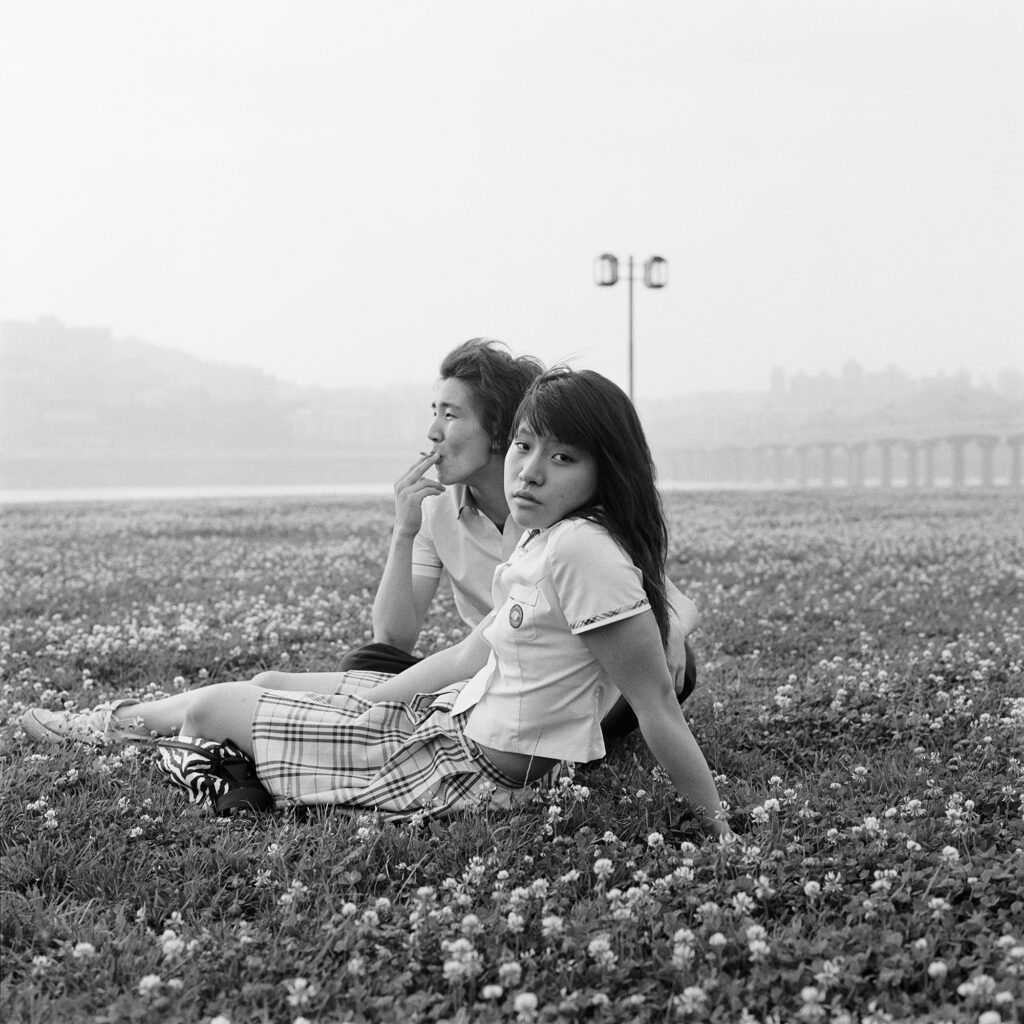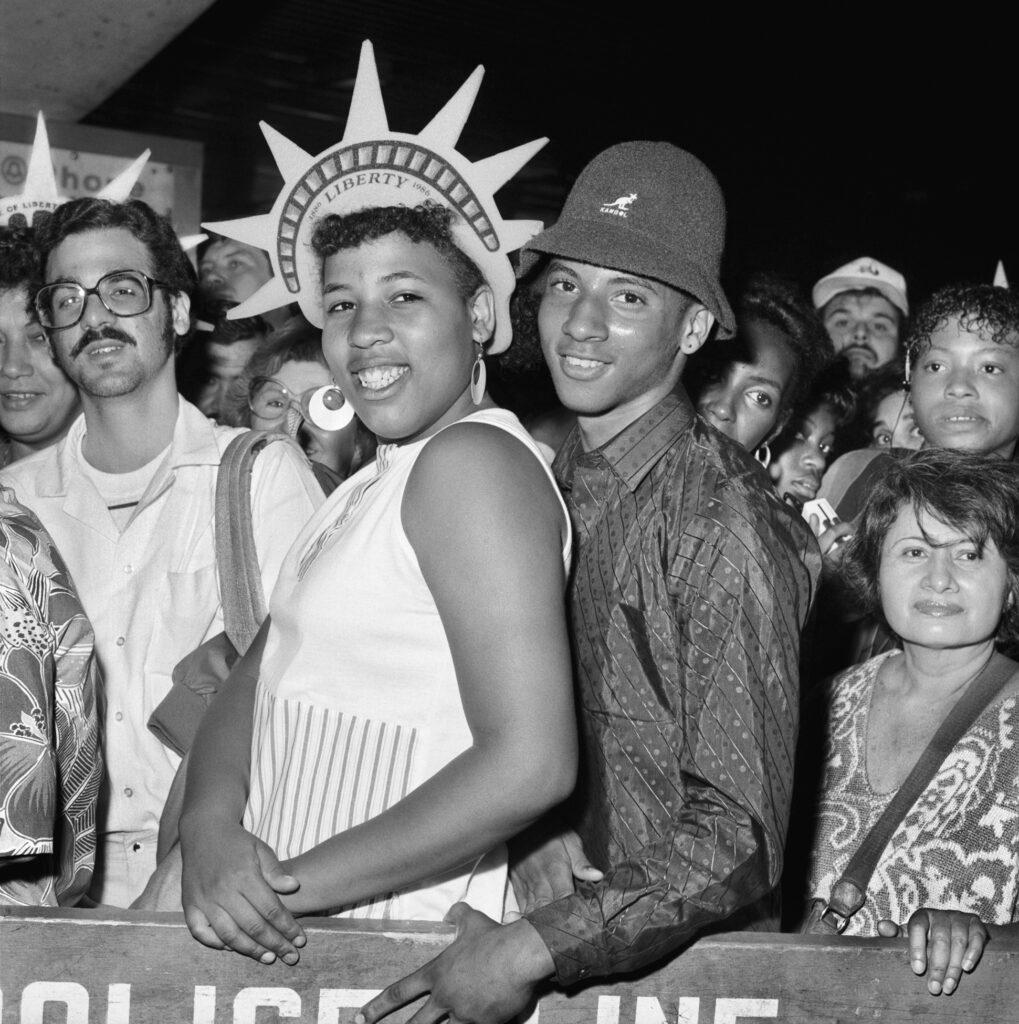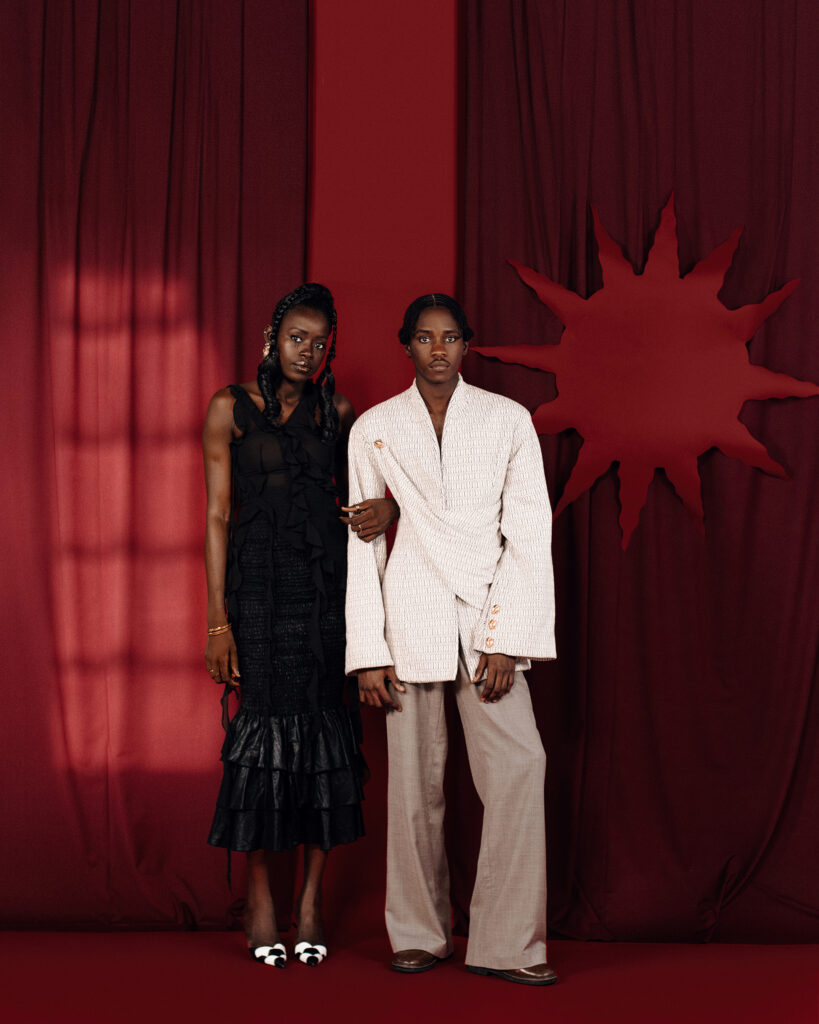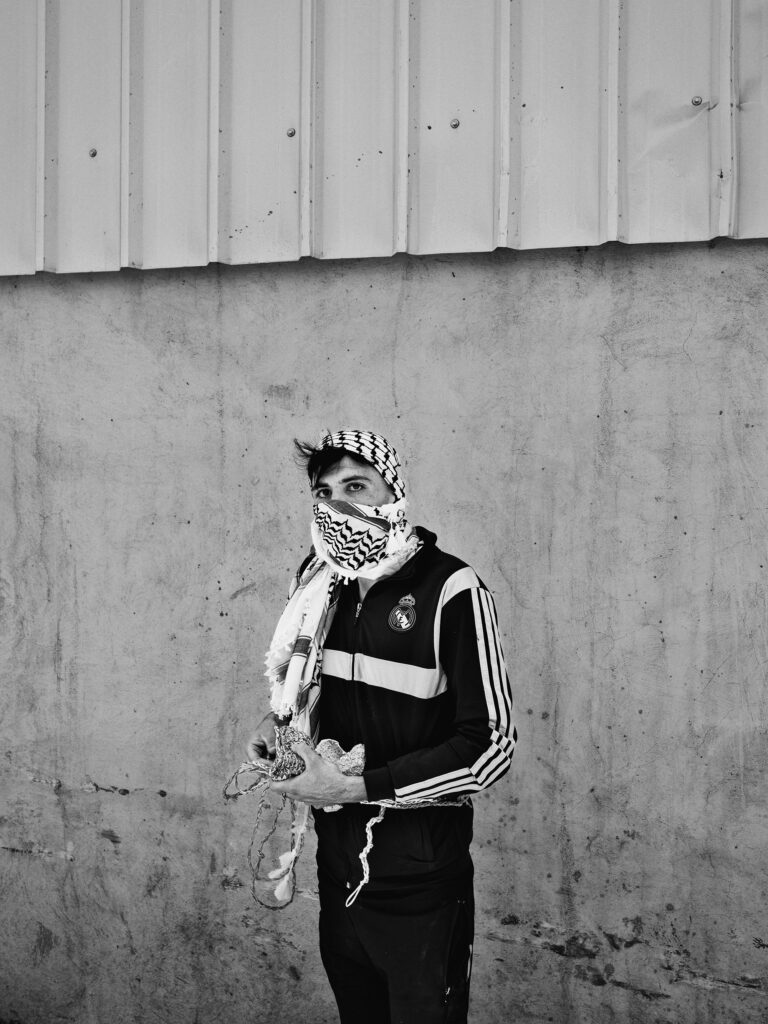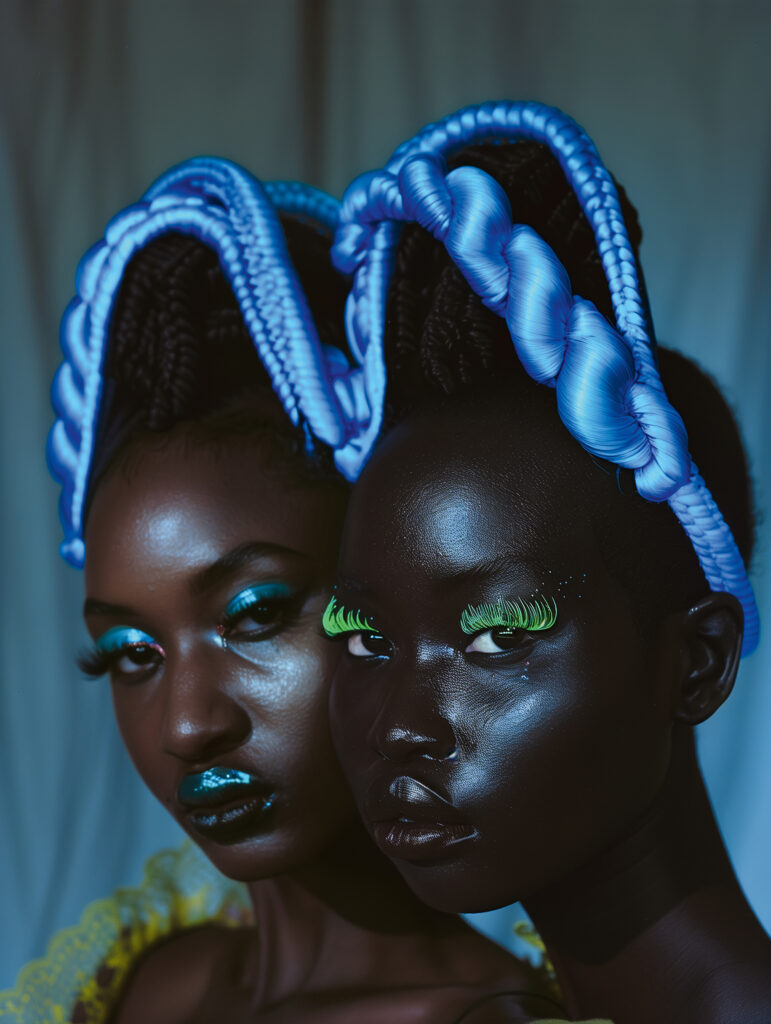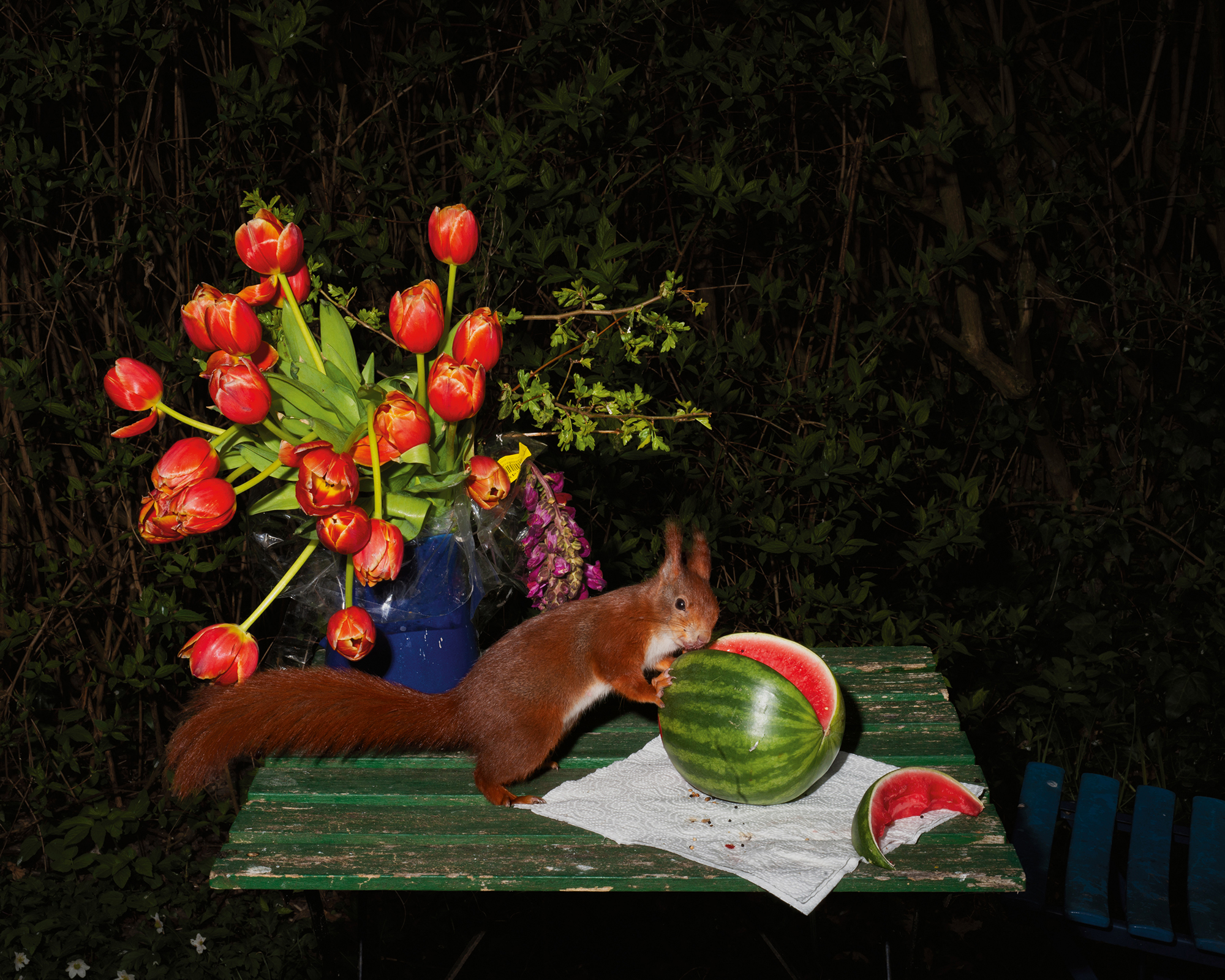
Portfolios
A Photographer’s Scavenged Still Lifes
Leaving leftovers in her backyard, Lia Darjes creates a stage for a series of improvised tableaux.
The problem with still lifes is that they’re often lifeless, as suggested by the Italians’ term for the genre: natura morta. From this problem, the photographer Lia Darjes, based in Hamburg and Berlin, is making a life’s work. Her latest pictures, recently collected in her photobook Plates I–XXXI (2024), appear to be formal arrangements but are, in fact, highly improvised tableaux in which snails, squirrels, ladybugs, and other fauna pay visits to the backyards of Berlin and parts unknown. They scavenge the leftovers of human congregation, triggering Darjes’s camera. They revel and rest. One cat, imperious, stares into the lens with convincing intent. Ants line up on watermelon slices like animated seeds. Raccoons paw crumbs and scream into the night. Squirrels, they’re just like us. They party hard, knocking over glasses, making a scene.
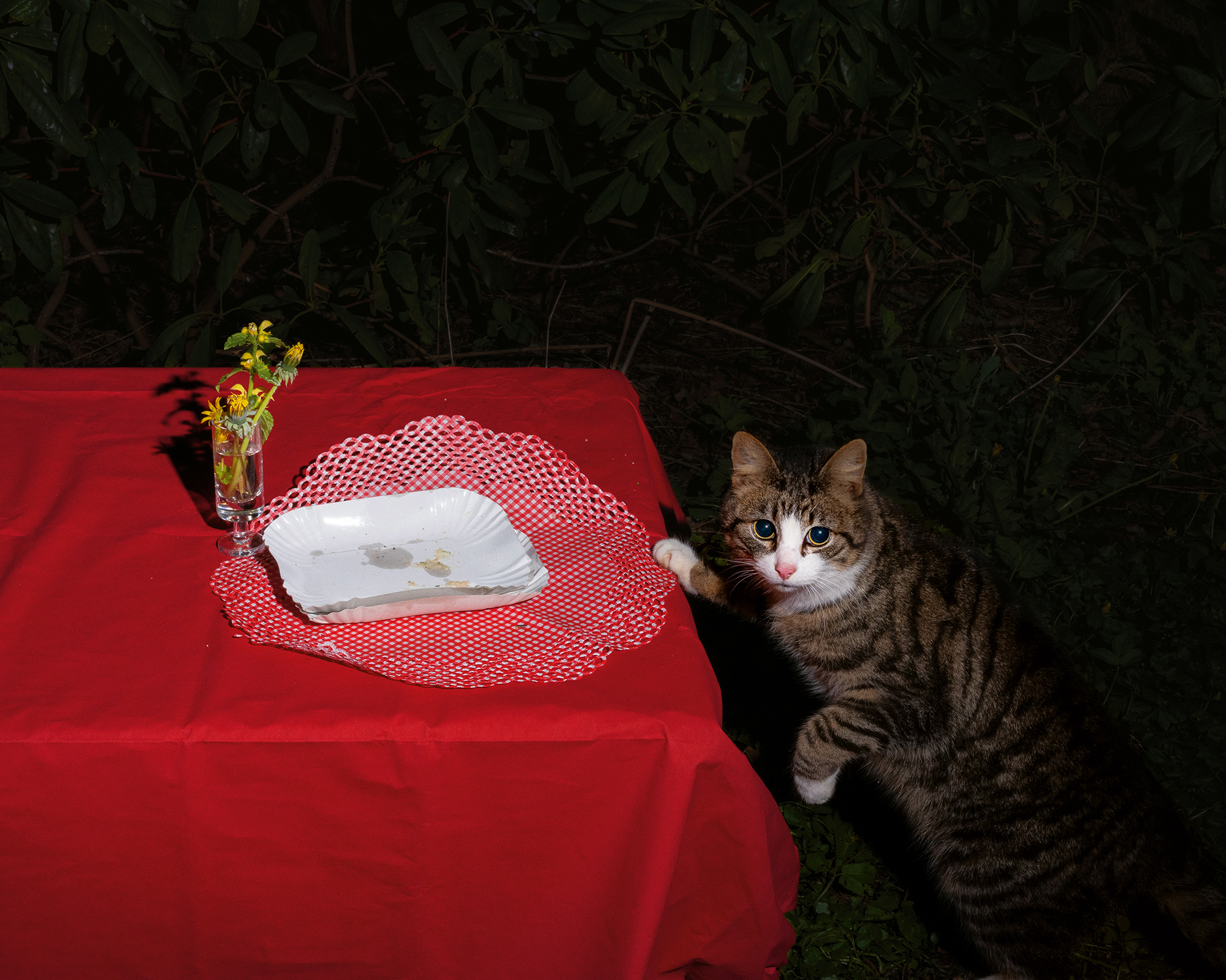
Photojournalism was Darjes’s first passion. Her previous series include portraits of Germans recently converted to Islam and photographs of temporary market stands by the roadside in Kaliningrad, Russia. Those images, with their hunks of meat and ripened fruit, summon the old tradition of vanitas, with its formal satisfaction, all vibrant foreground and dark beyond. Their ad hoc nature tells us that change—like the rubles piled before plastic cups of raspberries in one of her photographs—is all.
Lockdown came, and as the world stilled, memento mori were suddenly everywhere. Darjes relocated to her parents’ house in the German countryside. “I was sitting in the garden one day,” she said, “just thinking, What’s next? And I saw a squirrel jumping on our garden table. I thought, I wonder if I can recreate that.” The world reopened. She made plans—birthday parties for her kids, tea dates with mentors—and then plans for the after-parties, in which tablescapes of balloons and dirty dishes and cups of water to clean paintbrushes were left out overnight. The guest list was self-determined. A crow arrives and selects a perfect cherry from a bunch, seeming to offer it to the viewer. A field mouse sniffs out whether the printed image of a bird on a tablecloth might be a predator. Her images may tilt toward tweeness, particularly in comparison to the technical marvels made by the Dutch still life artists in the seventeenth century, whose painterly efforts embody the futility of trying to cheat mortality. But her work is anchored by the idea that when the stakes are life and death, we all must improvise.
Plate VI, 2022; from the series Plates I–XXXI
500.00
$500.00Add to cart
Of her previous work, Darjes said, “I struggled. Because I was always interested in the still life. But it’s made-up. Arranged.” The photographs in Plates offer ways out of that bind. They acknowledge the artificiality of documentation. The darkness at the edge of these frames is always a forest, but not always at night; the picnics were sometimes a pretext for the photographs, but you don’t know which ones. It’s hard to resist imposing a little vanitas-y symbolism on, say, Darjes’s image of a wasp attempting in vain to breach a Tupperware of kiwi. We’ve all been there. But we haven’t been alone, and we’re not solely in control. There are other, wilder partiers out there in the world. Here, for once, they get to call the shots.
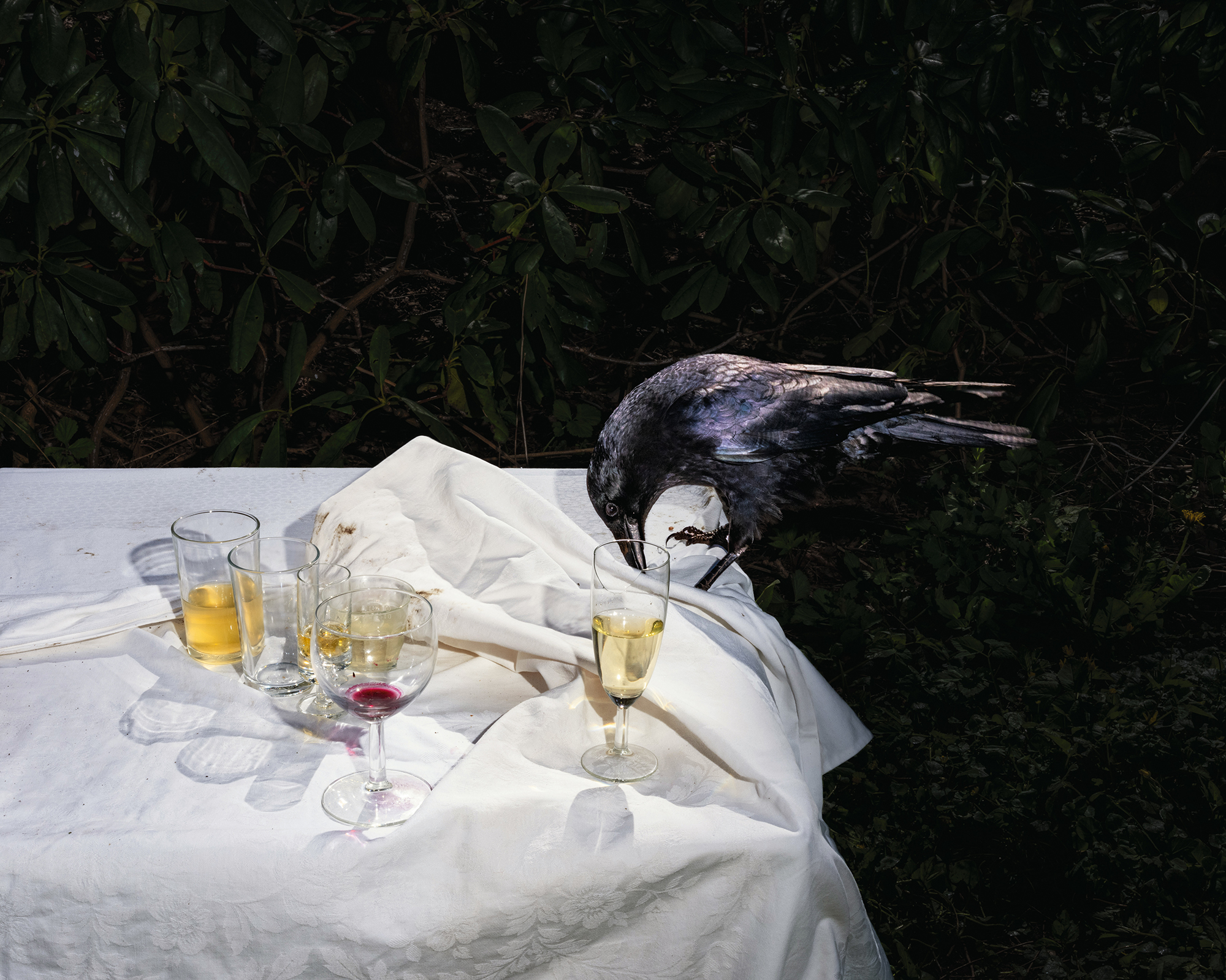
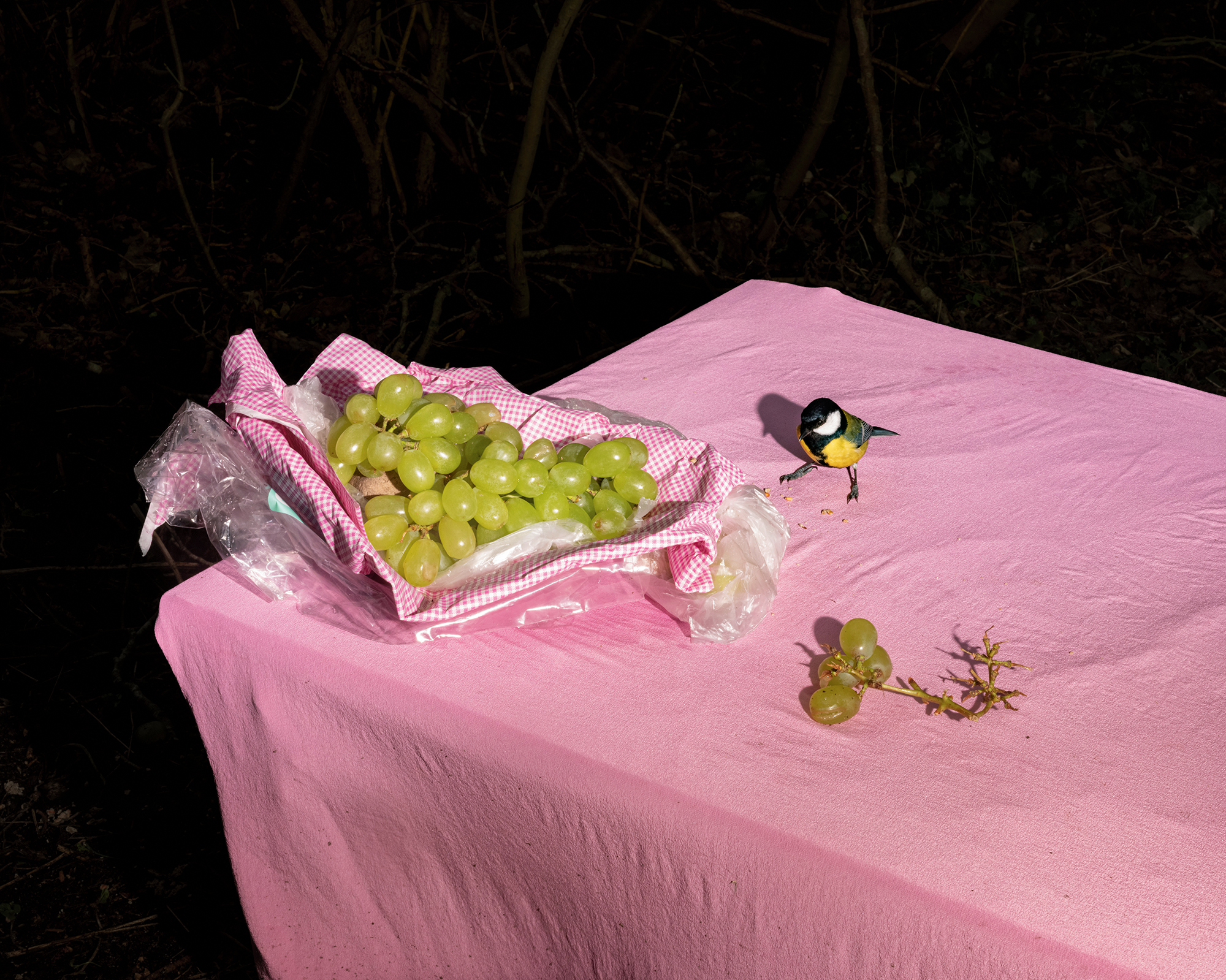
Courtesy the artist
This article originally appeared in Aperture No. 258, “Photography & Painting.”


